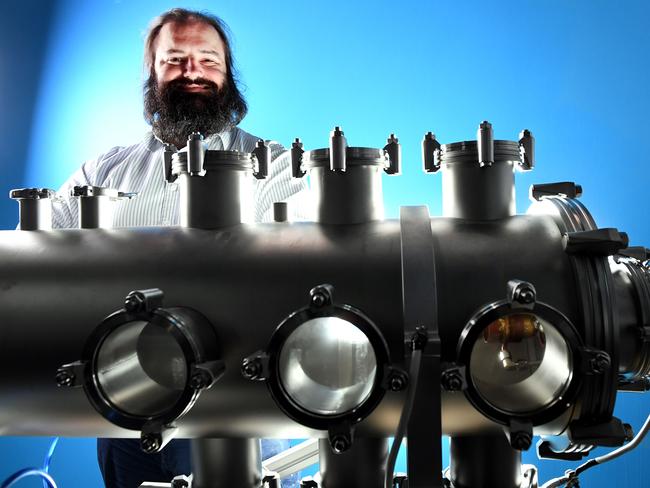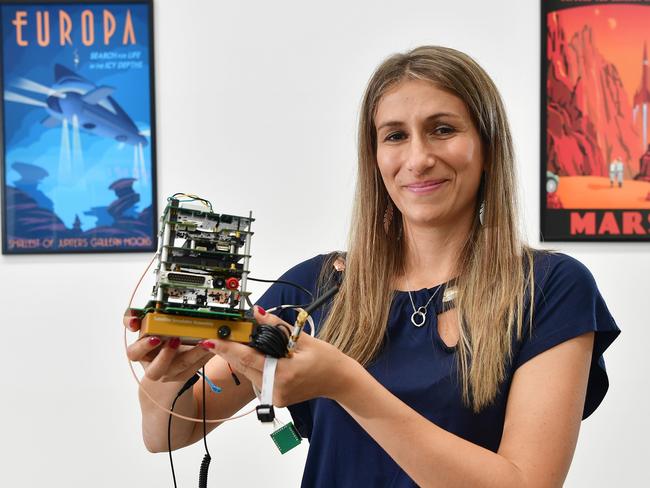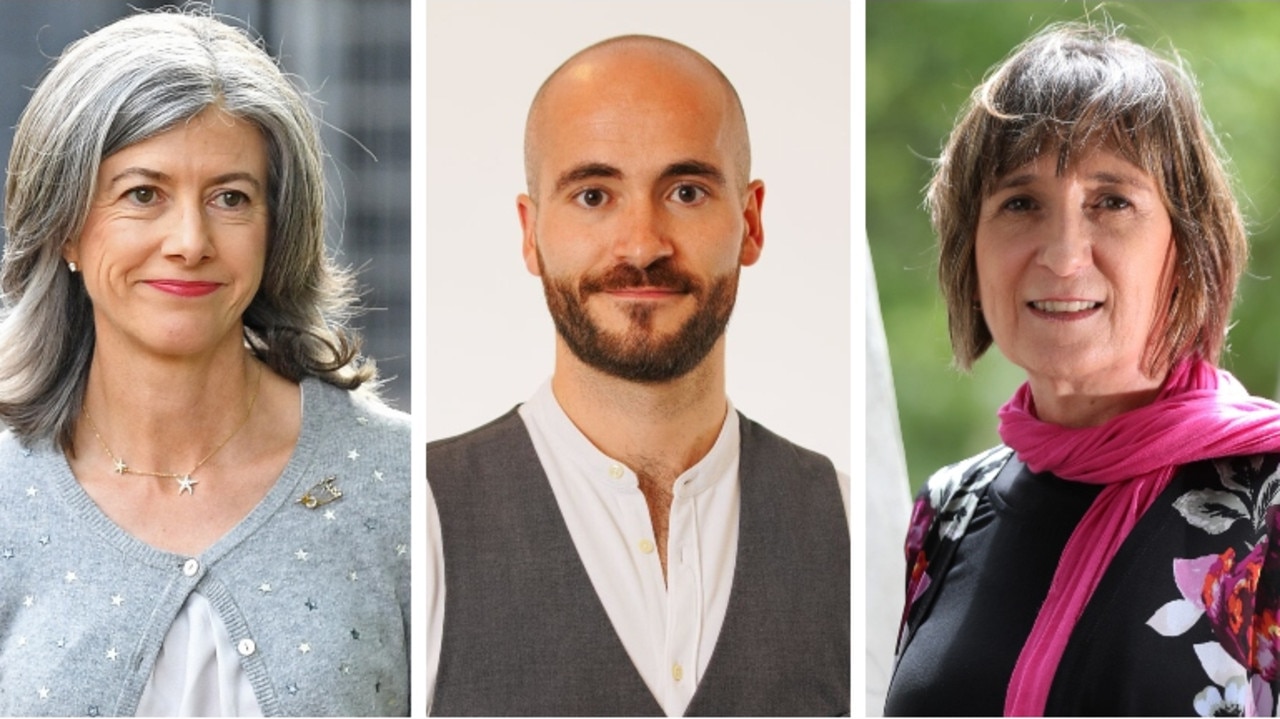Future Adelaide: South Australia faces stiff competition to take lead for Australian space industry
SOUTH Australia has entered Space 2.0 — a new era for a national space industry marked by new job opportunities, innovation and investment, invention and exploration. But there’s fierce competition..
Future Adelaide
Don't miss out on the headlines from Future Adelaide. Followed categories will be added to My News.
- FUTURE ADELAIDE: More reports from our special series
- LIQUOR LAWS: Mayors want expanded small-bar regulations
- WINNING FORMULA: Let’s bring electric race to Adelaide
- NEW LIFE: How to transform the Port: Lessons from Fremantle
- CITY GROWTH: Adelaide’s top 10 suburbs to live, work and play
SOUTH Australia is stargazing. We’ve entered Space 2.0, the most exciting time since the 1969, when Apollo 11 landed on the moon and American astronaut Neil Armstrong declared: “That’s one small step for a man, one giant leap for mankind.”
Space 2.0 is an era of innovation and investment, invention and exploration. And SA is planning to embrace the new expansion.
The state is seeking its share of the new era, and the very real-world industry, inspiration and jobs that will go with it.
But there’s fierce competition.
Fifty years ago SA launched Australia’s first satellite, WRESAT. That Woomera launch made Australia the third nation to design a satellite and launch it into orbit.
But that was half a century ago. Technology is moving so fast now that 1967 is practically the Dark Ages.
SA has started telling a new space story, a story about the future.
Tucked away in Beverley is a chapter in that future story. Fleet Space Technologies plans to launch Australia’s first commercial nanosatellites by the end of the year. Those tiny devices will form part of the Internet of Things; a global network of connected devices.

Not far away, in Brompton, Neumann Space has developed an ion drive to help keep satellites in orbit, or send probes to asteroids, or to help send supplies ahead of a manned mission to space. They’re also working with the State Government to help school students get projects on board the International Space Station.
In town, on Chesser St, Myriota is also planning to launch nanosatellites this year. At the University of Adelaide, Inovor has been designing tiny satellites but has just signed a deal with Italian space giant SITAEL to get working on bigger ones.
In SA, the space business is booming. There are more than 60 space start-ups. Both the Premier and the Opposition Leader are enthusiastically calling for SA to be home to the new National Space Agency.
Critically, defence spending is ramping up and plenty of big business is coming to town, and defence is inextricably linked to space. SA was way ahead of the curve when the Agency was announced last year.
The former Labor Government had already set up a state-based space agency and lobbied to get the International Astronautical Congress to the Convention Centre.
That means anyone who’s anyone in space was in Adelaide to see Elon Musk talk about his mission to Mars, and to hear the Federal Government announce the creation of the Agency.
Even then Adelaide astronaut Andy Thomas was talking the state up to Prime Minister Malcolm Turnbull, and not-yet Premier Steven Marshall was getting increasingly curious about the sector’s possibility.
Then the other states also got curious, and now all of them are lobbying for their piece of the space pie. Canberra is the interim home for the agency, and is a natural administration centre because it’s near policymakers and defence agencies.
NSW and Victoria are pushing to have Space HQ because they’re home to many big companies that might dabble in space. Queensland has a company working on rockets, WA has a lot of space.
The Northern Territory is considered a good option for a launch site, and little old Tasmania says it has the space smarts.
Premier Steven Marshall has no doubt that we are equipped to become Australia’s centre of Space 2.0. He will settle for nothing less than a space headquarters in Adelaide.
“We’ve proved we can play a coordinating role,” he told The Advertiser this week.
“We believe the headquarters need to be where the industry node is and that has to be SA.”
He brought some serious starpower, with high-profile Adelaide astronaut Andy Thomas throwing his support behind the SA bid.
“I’m unashamedly pro-SA,” Dr Thomas said. “It’s very logical to put the headquarters for such an agency here in SA. SA has a huge defence industry and defence and space go hand-in-hand. You can’t have one without the other.”

It’s a grounded argument. Billions of defence dollars are set to flow into the state, and there are solid national security arguments for the two industries to be co-located.
Not to mention all those start-ups that have chosen to be based here. They did that for a reason — partly because of State Government financial encouragement, but also because of the sense an ecosystem is building here.
There are grand visions of a City Deal in Adelaide. A setup where all levels of government shake hands with industry, universities, and the community, agreeing to a long-term vision of entrepreneurial and adventurous space missions.
While satellites are at the core of that — a lucrative network of communication connecting the world — there is an even grander dream of being part of interplanetary missions, of helping discover alien life.
But this is no done deal. The National Space Agency kicks off on July 1, and its first mission will be a clear-eyed assessment of what all the states and territories have to offer.
Agency head Megan Clark is in charge; she’s an acclaimed brain with an enormous job ahead of her.
And Dr Clark is too smart to weigh into the state bidding war.
“The issue of location and how it goes with the states and territories is absolutely vital and all options are open,” she said.

“If you go back to the purpose of the agency … it’s there to transform and grow Australia’s space industry.”
At the recent Australian Strategic Policy Institute conference, Building Australia’s Strategy for Space, various states made their pitch.
But the general consensus among the less-partisan observers was that the agency may need a home office, but the market will determine the form of the space industry constellation.
Canberra seems the obvious home for the pen-pushers, and it will be private operators who decide where launch sites are set up.
The Defence Department says Woomera is not up for grabs.
“While it would be physically possible to launch a satellite from Woomera, there are other locations in Northern Australia, closer to the equator, that offer advantages for industry that may well outweigh those perceived to be associated with Woomera,” a spokesman told The Advertiser.
That slightly snarky response ignores the fact that the Woomera Prohibited Area can and has been opened up for other pursuits such as mining and tourism, and that the regulation hoops for space launches have already been jumped through.
There’s also potential at other SA sites, such as the proposal to launch rockets from Streaky Bay.
However, Defence is correct that for many launch opportunities, something close to the equator can be cheaper — the Earth moves faster there so it’s easier to fling things into orbit.
So SA is in with a chance for launch sites, but by far our greatest strength is industry, and the tie-ins with defence.
Innovation and Jobs Minister Michaelia Cash — who is responsible for space — says she wants to see what each state can bring to the table.
But SA doesn’t just have to serve up a delicious offering to the Federal Government; ultimately it will be industry we have to tempt to keep sitting down with us.



